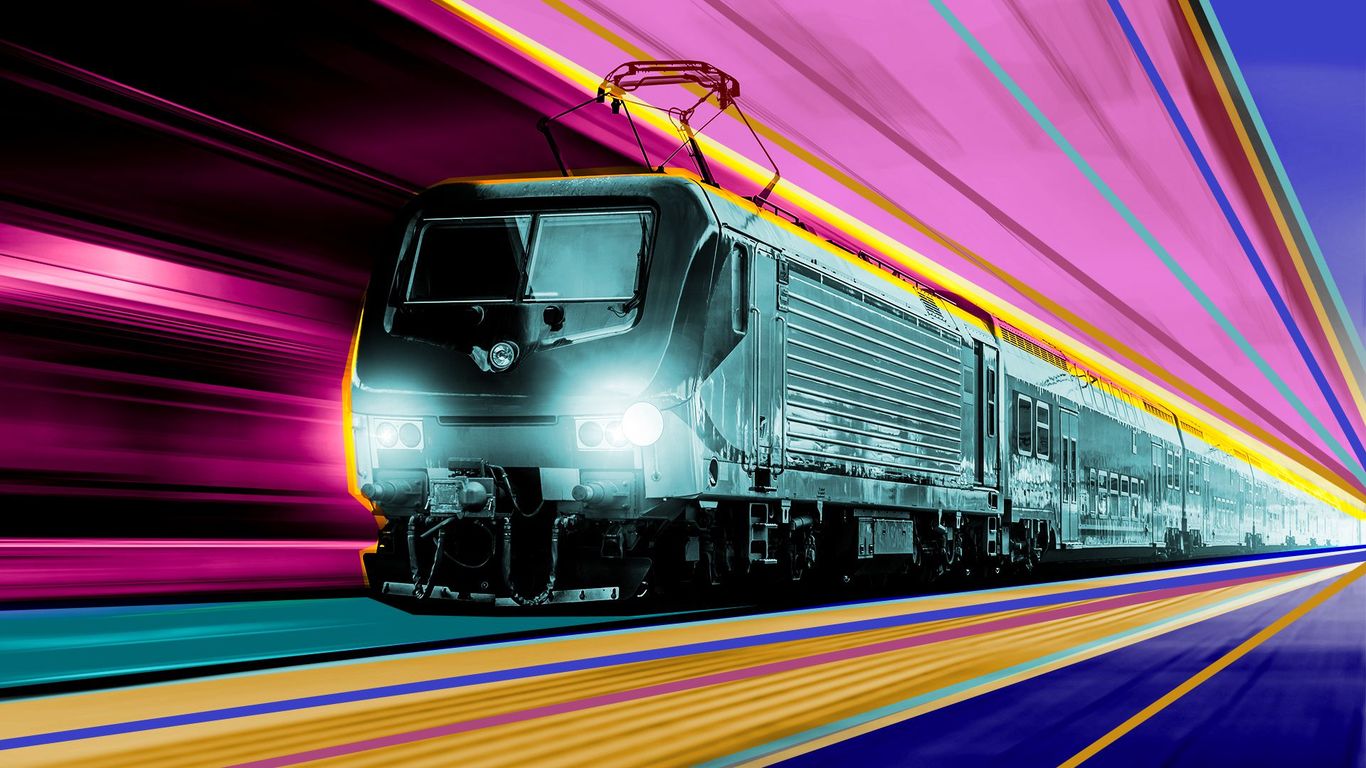
As cities rebuild their mass transit systems after a year of disruption, they must meet riders where they are, not where they were.
Why it matters: Some agencies are rethinking traditional fixed-route networks in favor of flexible, on-demand rides, often in underserved communities.
As cities rebuild their mass transit systems after a year of disruption, they must meet riders where they are, not where they were.
Why it matters: Some agencies are rethinking traditional fixed-route networks in favor of flexible, on-demand rides, often in underserved communities.
The big picture: Predicting demand for public transportation is a crapshoot until gradually reopening businesses sort out their post-pandemic work rituals.
- Bus and train ridership, which collapsed at the start of the pandemic, is still half what it used to be, according to the American Public Transportation Association.
- "We've shifted from survival mode to winning back riders," APTA CEO Paul Skoutelas tells Axios.
Yes, but: Transportation needs have changed dramatically in the past year.
- Urban residents who relocated to far-flung suburbs are making plans to visit downtown offices just once or twice a week in the future.
- Meanwhile, lower-income people who still depend on public transportation are waiting longer for pared-back services.
- And new centers of employment have popped up in the suburbs and exurbs of many metropolitan areas — often beyond traditional service areas.
The upheaval is an opportunity for transit agencies to experiment with new approaches.
- "Flexibility is the biggest thing. You need to have a system that can react to change very quickly. It could differ by the day," says Brett Wheatley, CEO of Ford-owned TransLoc, a transportation software firm that advises cities, businesses and campuses.
One way cities aim to lure back riders is by making mass transit more efficient, especially in light of increased private car usage since the pandemic.
- Many cities, including Boston and San Francisco, are adding bus priority lanes to zip through traffic jams.
In Philadelphia, the regional public transportation authority, SEPTA, is partnering with Via, a transit software company, to provide on-demand shuttle services to graveyard shift workers at new distribution centers built on the outskirts of the city.
- With demand higher than expected, the agency is now putting new muscle behind efforts to redesign its bus networks.
- "Our job centers have changed. Our population, our land use, a lot has changed," says senior operations planner Harley Cooper. "Our bus network has not."
What to watch: Arlington, Texas, a city of nearly 400,000 people with no traditional bus or rail service, could be a model for what's next in transportation.
- It partnered with Via to provide on-demand transportation throughout the city.
- Residents use an app to summon a ride from one of about 50 shuttle vans that crisscross the city's 99 square miles.
- Fares ranging from $3 to $5 are subsidized by the city, but students and lower-income people get to ride for free.
- It costs a small fraction of what traditional mass transit would cost, says outgoing Mayor Jeff Williams, and helps reduce congestion and emissions, too.
The bottom line, says Williams: "We finally have public transportation that is really making a difference."
"try" - Google News
June 13, 2021 at 01:03AM
https://ift.tt/3pOet3E
Flatlined transit systems try new tricks - Axios
"try" - Google News
https://ift.tt/3b52l6K
Shoes Man Tutorial
Pos News Update
Meme Update
Korean Entertainment News
Japan News Update
Bagikan Berita Ini














0 Response to "Flatlined transit systems try new tricks - Axios"
Post a Comment